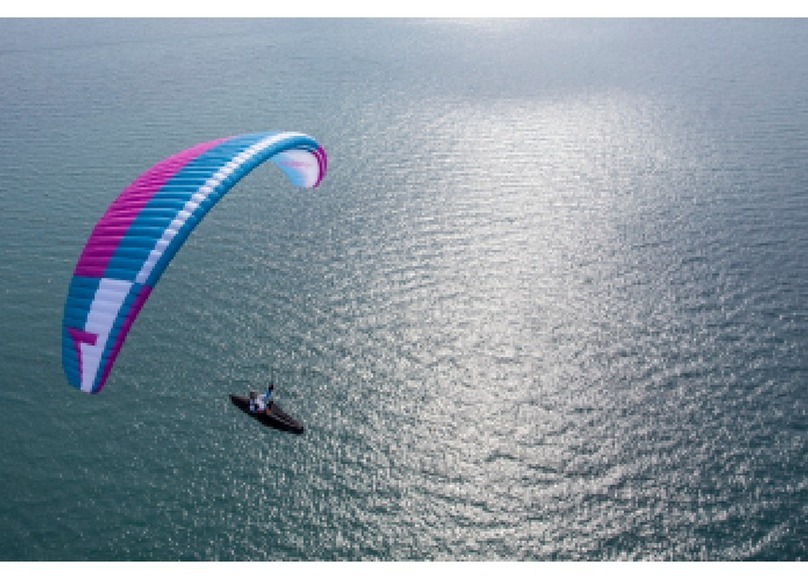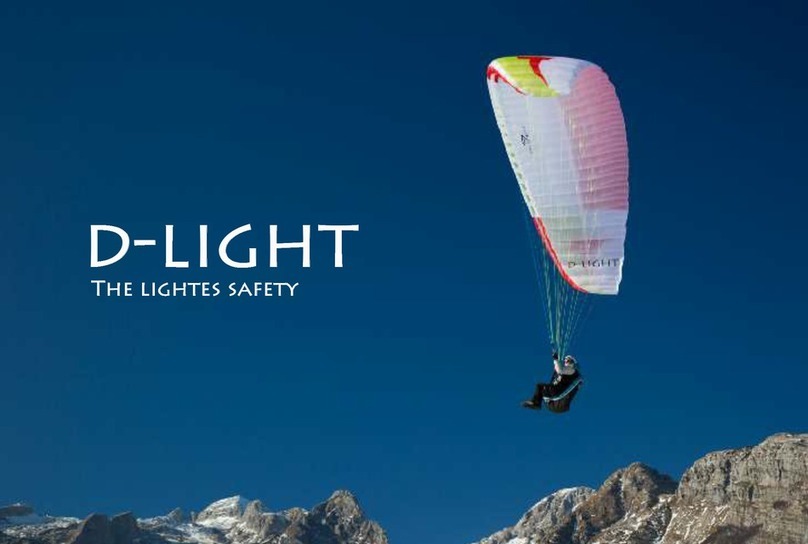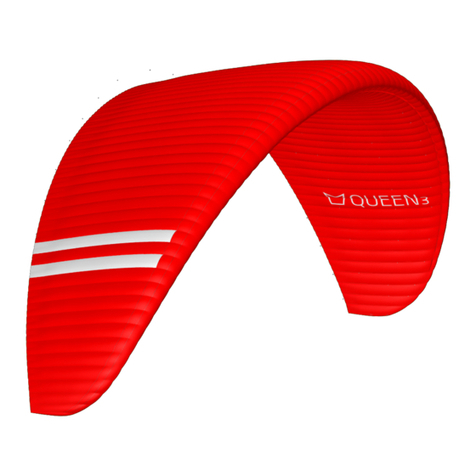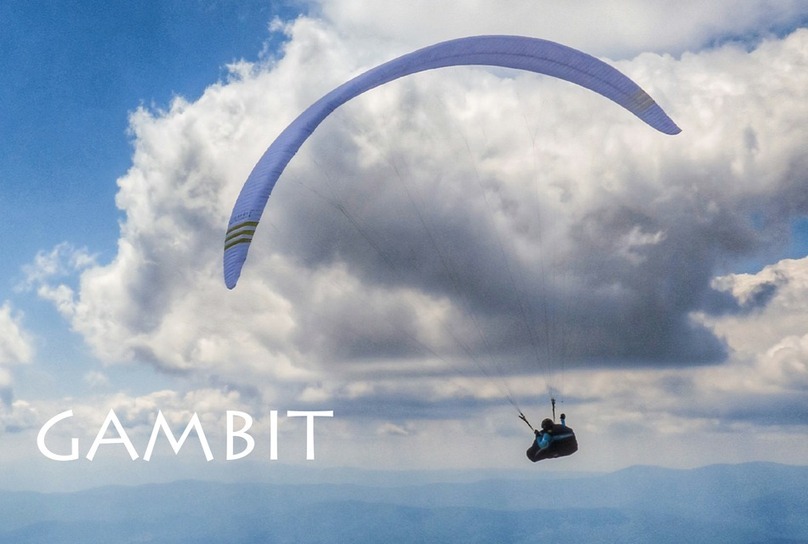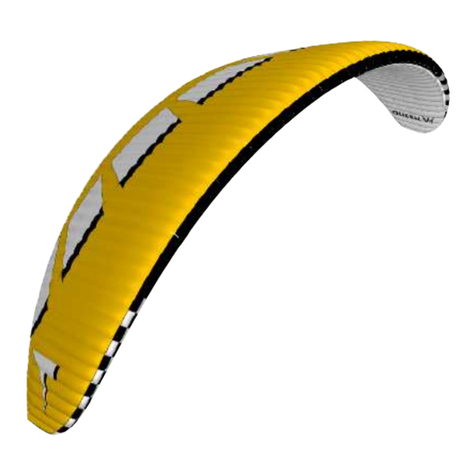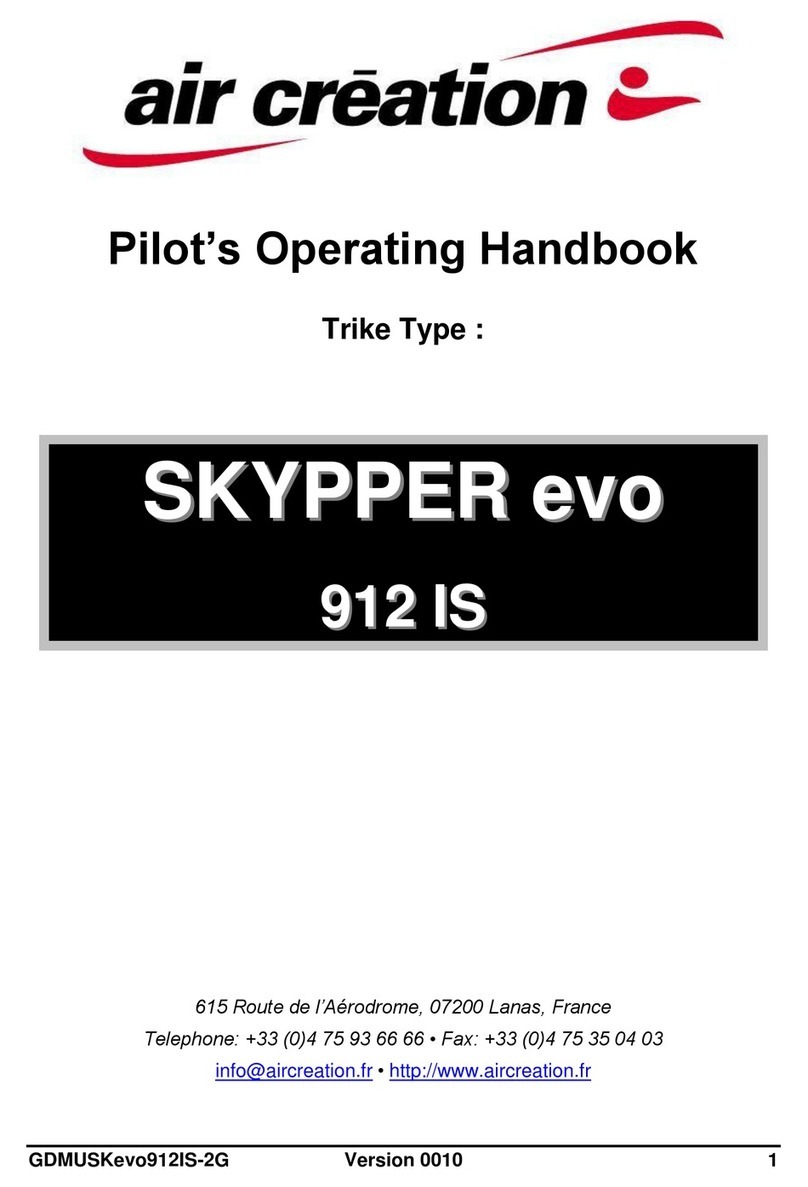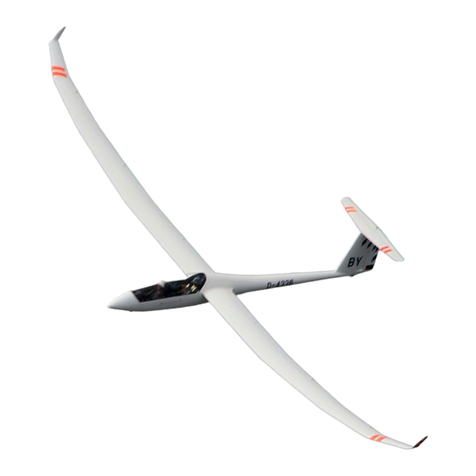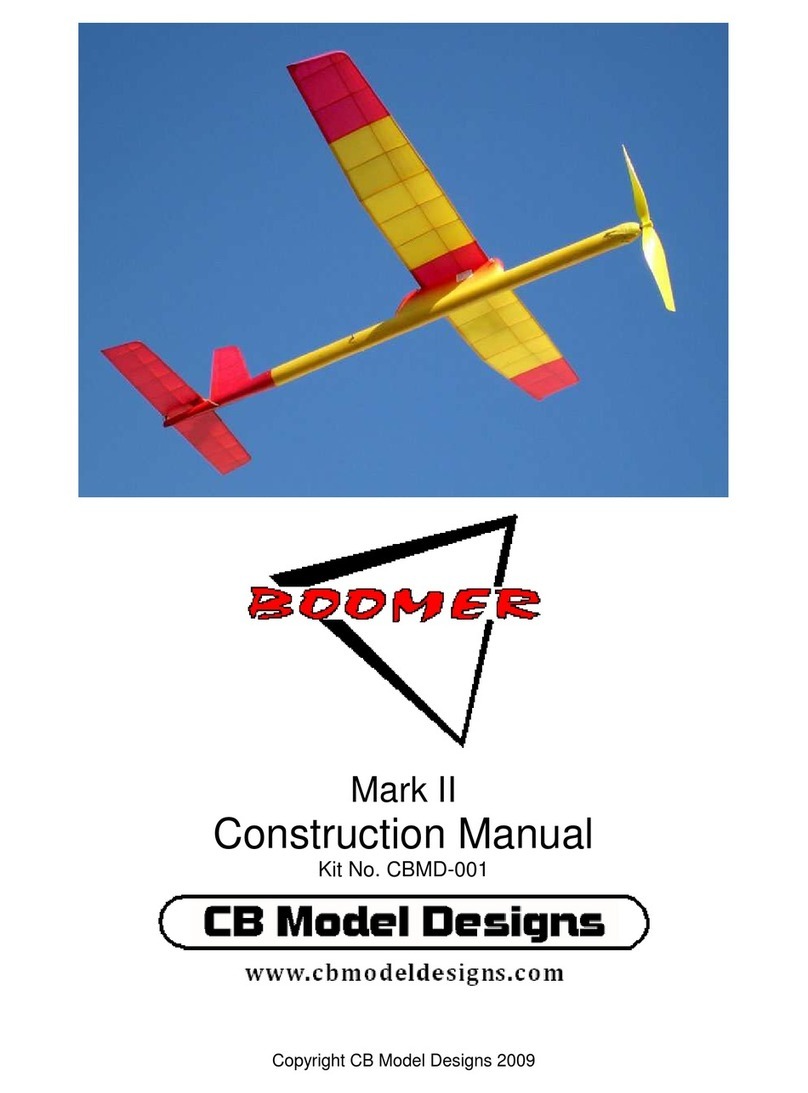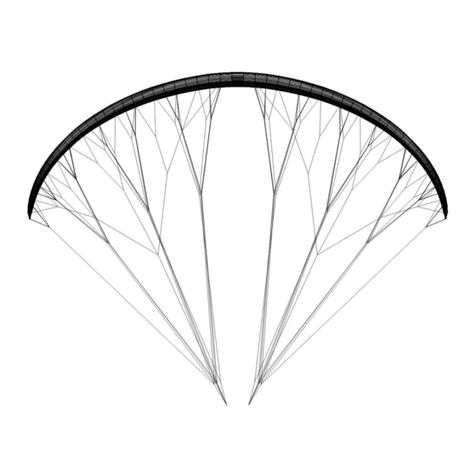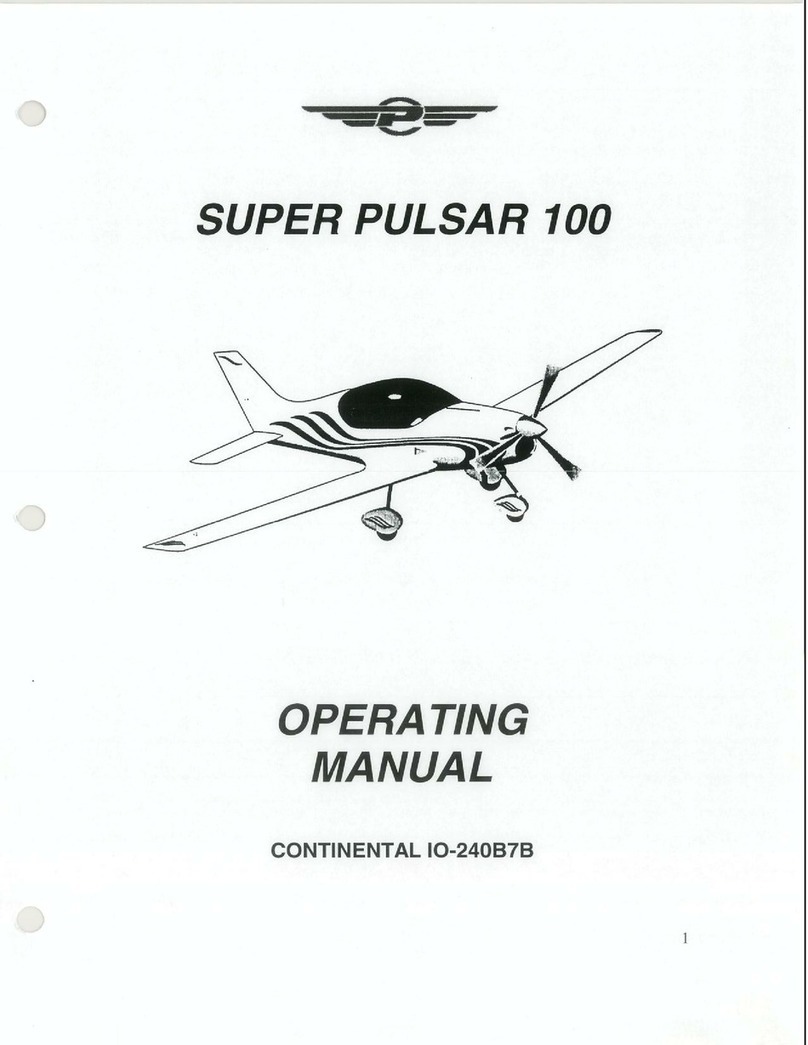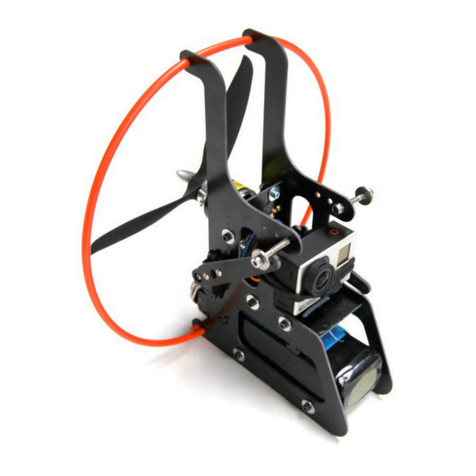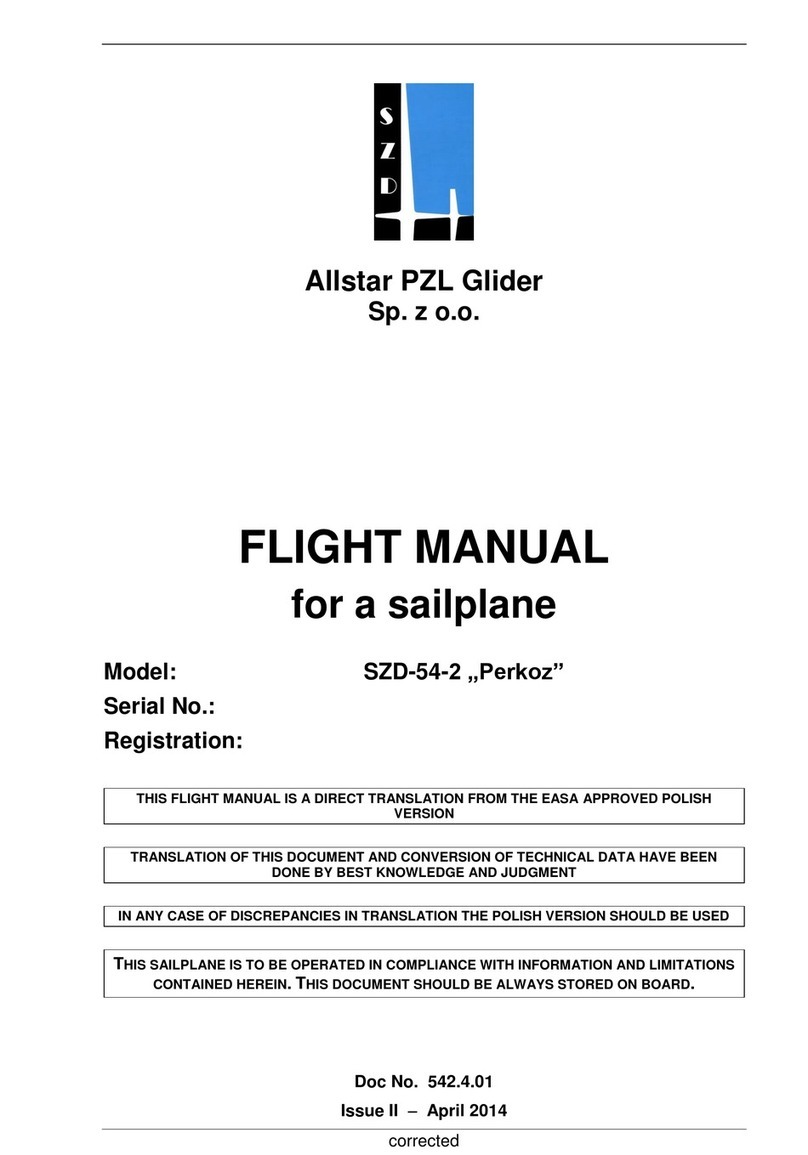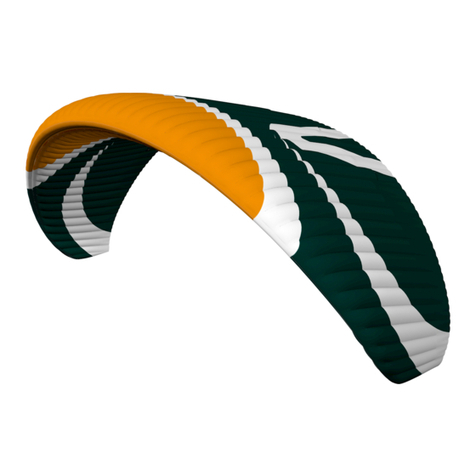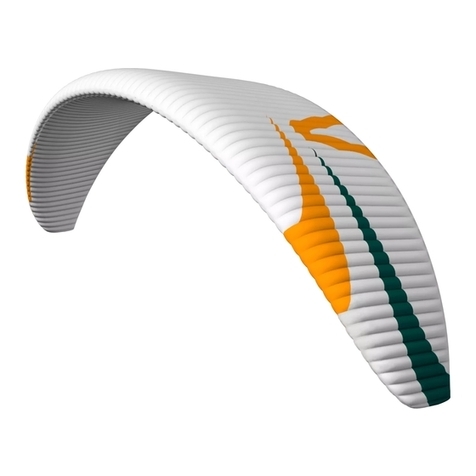
18
Fast decent techniques
Fast descent techniques should be well familiar to any pilot as they
are important resources to be used in certain situations. These
manoeuvres should be learned at your ying school as a part of
paragliding pilot training. Nevertheless, we recommend practicing
these manoeuvres on SIV courses under professional supervision.
Big ears
This is a safe method to moderately loose altitude while still
maintaining forward speed. To do big ears, release any brake line
loops around your wrist, set your leg on the speed bar, but do not
push it. Now pull the outer A lines (the A2 risers in the drawing)
on both sides. As long as you keep the A2 risers pulled, the wing
tips stay folded and the sink speed increases. To regain normal
ight, release the A2 risers, and if necessary apply the brakes with
short impulse movements. Release big ears at least 100 meters
above the ground. While using big ears, the wing speed decreases,
which is why we also recommend using the accelerator half way
in combination with big ears to maintain enough horizontal speed
and to also additionally increase vertical speed. Be careful not to
pull the brakes while making the ears! Steering is done by weight
shift only. Always do the big ears rst and then accelerate; not
the other way around as you will risk getting a frontal collapse.
B line stall
While in the B-stall the glider has no horizontal speed and the
sink rate increases to about -8m/s. To enter the B-stall reach
for the B risers just below the maillons and pull both B line
risers symmetrically for about 20 cm. To exit the manoeuvre,
simultaneously release both risers quickly. On exit the Knight
gently dives without deep stall tendencies.
Spiral dive
The spiral dive is the most demanding of all three manoeuvres
(Big ears, B-stall, Spiral) and should only be trained gradually and
always at high altitude. The spiral dive should be practiced and
learned on a SIV course under professional supervision.
To enter the spiral, weight shift to the desired side and gradually
apply the brake on the same side. Then let the wing accelerate
for two turns and you will enter the spiral dive. While in the spiral,
you can control your descent rate and bank angle by applying
more or less inner brake. Depending on how steep the spiral is
you may need to use also outer brake.
To exit the spiral dive we recommend that the pilot is in the neutral
weight shift position. If you release the inner brake, the wing exits
the spiral dive by itself. The Knight has no tendency of a stable
spiral but you should be aware of the procedure for exiting a
stable spiral.
To exit a stable spiral dive, weight shift to the opposite side of
the turn and apply the outer brake until feeling the deceleration of
the wing rotation. Then release the outer brake and let the glider
decelerate for the next couple of turns. To avoid a big pendulum
movement after exiting the spiral, apply a short brake input on
the inner side before the glider exits the spiral.
Warnings (Spiral dive):
•
There is a possibility of losing consciousness while in the
spiral dive. Never make a spiral with more than 16-18m/s





















